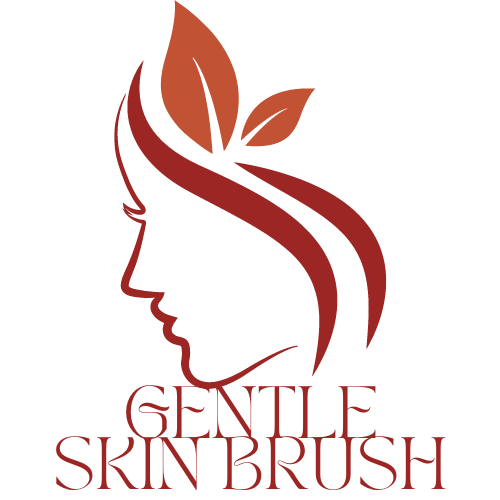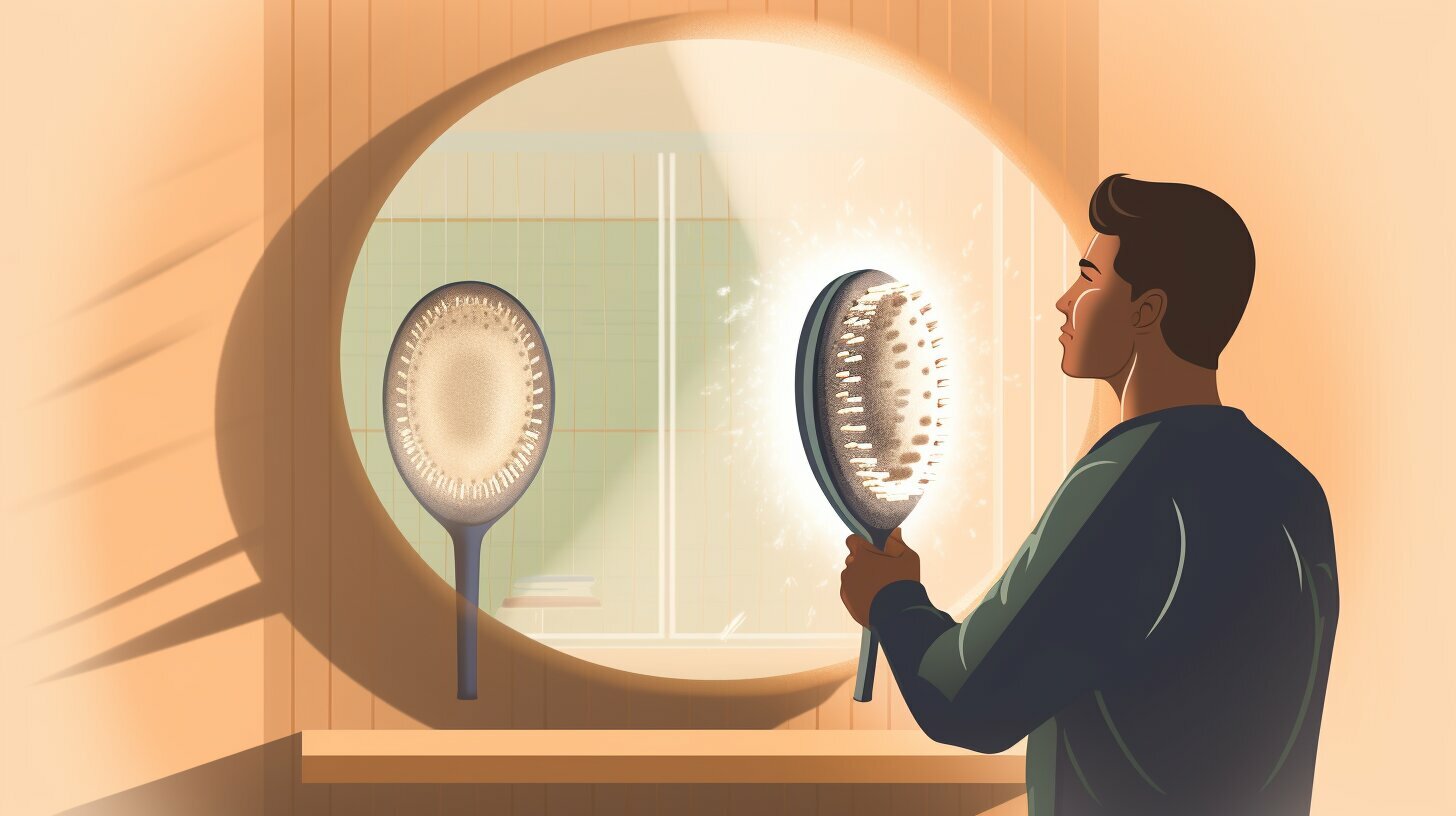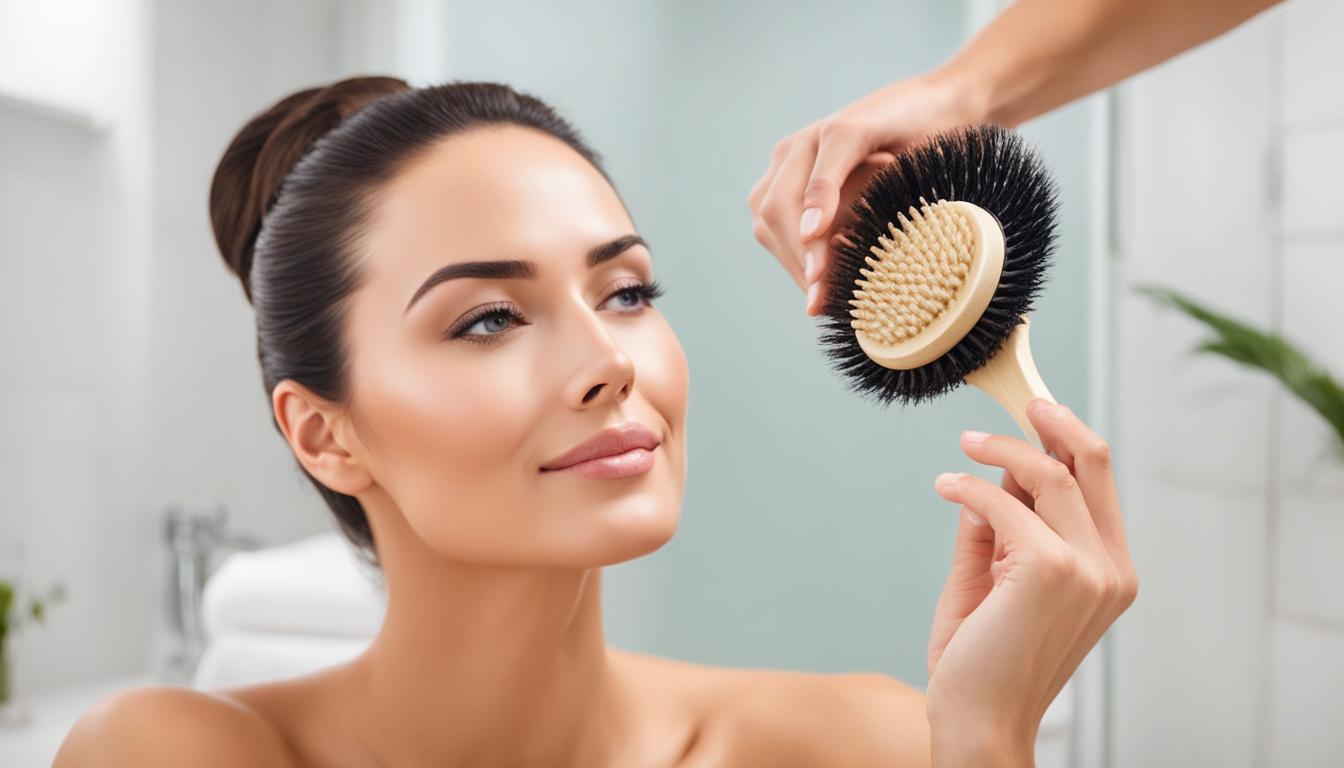Body brushing is an effective exfoliation technique that can greatly improve your skin’s health. But do you use a body brush wet or dry? Let’s find out.
Contents
- 1 What is Body Brushing and How Does it Work?
- 2 Dry Brushing: The Benefits and Best Practices
- 3 Wet Brushing: The Advantages and How to Do It
- 4 Choosing the Right Method: Dry Brushing or Wet Brushing?
- 5 Conclusion
- 6 FAQ
- 6.1 Q: What is body brushing?
- 6.2 Q: Should I dry brush or wet brush?
- 6.3 Q: What are the benefits of dry brushing?
- 6.4 Q: How do I dry brush?
- 6.5 Q: What are the advantages of wet brushing?
- 6.6 Q: How do I wet brush?
- 6.7 Q: Which method is better for dry skin?
- 6.8 Q: Can I dry brush if I have sensitive skin?
- 6.9 Q: How often should I dry brush?
- 6.10 Q: Can I wet brush more frequently?
- 6.11 Q: Should I apply sunscreen after dry brushing?
- 6.12 Q: Who should avoid dry brushing?
- 7 Source Links
Key Takeaways:
- Dry brushing involves using a dry brush with natural fibers to remove dead skin cells and improve circulation.
- Wet brushing involves using a wet brush, loofah, or washcloth with water to scrub the skin and remove dirt and excess sebum.
- Dry brushing has benefits such as improved circulation, reduced appearance of cellulite, and removal of dead skin cells.
- Wet brushing is better suited for those with dry skin and can help hydrate the skin while cleansing it.
- The choice between dry brushing and wet brushing depends on personal preference, skin type, age, and climate.
What is Body Brushing and How Does it Work?
Body brushing is an exfoliation technique that involves using a brush to gently scrub the skin. It works by removing dead skin cells and stimulating blood circulation, resulting in smoother and healthier skin. This method has been used for centuries and is known for its numerous benefits.
When dry brushing, it is essential to choose a brush with natural bristles, as synthetic ones may be too harsh on the skin. Starting from the feet and moving upwards, the brush should be used in long, sweeping motions towards the heart. This direction helps to improve lymphatic drainage. The pressure applied should be firm but gentle, avoiding any discomfort or irritation.
Wet brushing, on the other hand, involves using a wet brush, loofah, or washcloth in the shower. The water helps to soften the skin, making it easier to remove impurities and excess sebum. Wet brushing is especially beneficial for those with dry skin, as it provides hydration while exfoliating.
Regardless of the method chosen, regular body brushing can lead to noticeable improvements in the skin’s appearance and texture. It can help to reduce the appearance of cellulite, promote detoxification, and enhance the effectiveness of other skincare products. However, it is important to note that dry brushing is not suitable for sensitive or inflamed skin. In such cases, wet brushing is a better alternative.
| Dry Brushing Benefits | Wet Brushing Advantages |
|---|---|
| Improves circulation | Effectively cleanses the skin |
| Reduces the appearance of cellulite | Removes impurities |
| Removes dead skin cells | Hydrates dry skin |
In conclusion, body brushing is a beneficial exfoliation technique that can be done using either the dry or wet method. Both approaches have their own advantages and are suitable for different skin types. It is important to consider personal preferences, skin conditions, and climate when choosing between dry brushing and wet brushing. Regardless of the method chosen, regular body brushing can improve the overall health and appearance of the skin.
Dry Brushing: The Benefits and Best Practices
Dry brushing offers a range of benefits for the skin, particularly for those with dry skin. By incorporating dry brushing into your skincare routine, you can enjoy improved skin health and a radiant complexion. This exfoliation technique helps to remove dead skin cells, stimulate circulation, and promote lymphatic drainage.
One of the main benefits of dry brushing is its ability to improve skin tone and texture. The gentle brushing action helps to exfoliate the skin, removing dry and flaky patches. This can leave your skin feeling smoother and looking more radiant.
“Dry brushing can also promote detoxification by stimulating the lymphatic system,” says skincare expert Dr. Jane Simmons. “By brushing the skin in long, sweeping motions towards the heart, you can help to move lymph fluid and toxins out of the body.”
Another advantage of dry brushing is its potential to reduce the appearance of cellulite. The brushing action helps to break down fatty deposits and improve the appearance of dimpled skin. Regular dry brushing, combined with a healthy diet and exercise, can contribute to smoother-looking skin.
How to Dry Brush Properly
When dry brushing, it’s important to choose a body brush with natural bristles. Synthetic bristles can be harsh on the skin and may cause irritation. Begin by brushing the soles of your feet and work your way up, using long, sweeping strokes towards the heart. Avoid brushing over broken or inflamed skin and sensitive areas like the face or breasts.
Remember to apply gentle pressure when brushing. The purpose of dry brushing is to stimulate the skin, not to scrub it vigorously. Start with light pressure and gradually increase if desired. Aim to dry brush once or twice a week, preferably before showering, to reap the maximum benefits.
| Best Practices for Dry Brushing |
|---|
| Use a body brush with natural bristles and a long handle for easy reach. |
| Brush in long, sweeping motions towards the heart. |
| Avoid brushing over broken or inflamed skin. |
| Start with light pressure and increase if desired. |
| Focus on areas prone to dryness, such as elbows, knees, and ankles. |
In conclusion, dry brushing is a beneficial exfoliation technique for improving skin health. By incorporating this practice into your skincare routine, you can enjoy the advantages of smoother, more radiant skin. Remember to choose a body brush with natural bristles, apply gentle pressure, and avoid brushing over sensitive or inflamed areas. With regular dry brushing, you can achieve a healthier, more vibrant complexion.
Wet Brushing: The Advantages and How to Do It
Wet brushing is a great option for those with dry skin as it helps to cleanse, hydrate, and rejuvenate the skin. Discover the advantages of wet brushing and learn how to incorporate it into your skincare routine.
One of the primary advantages of wet brushing is its ability to effectively cleanse the skin. When done in the shower, the combination of water and a wet brush, loofah, or washcloth helps to remove dirt, sweat, and excess sebum from the skin’s surface. This deep cleansing action can leave your skin feeling refreshed and revitalized.
In addition to cleansing, another advantage of wet brushing is its hydrating properties. The water used during wet brushing helps to replenish moisture in the skin, making it a beneficial technique for those with dry or dehydrated skin. Regular wet brushing can help restore a healthy balance of hydration, leaving your skin looking plump and glowing.
To incorporate wet brushing into your skincare routine, start by using a wet brush, loofah, or washcloth. Apply gentle pressure and use circular motions to scrub your skin. Focus on areas that are prone to dryness, such as elbows, knees, and heels. Remember to be gentle and avoid harsh scrubbing, as it can cause skin irritation. After wet brushing, rinse off any remaining residue and follow up with a moisturizer to lock in hydration.
Overall, wet brushing is a versatile technique that offers numerous benefits for dry skin. Whether you choose to use a wet brush, loofah, or washcloth, this method can effectively cleanse, hydrate, and rejuvenate your skin, leaving it feeling refreshed and revitalized.
Choosing the Right Method: Dry Brushing or Wet Brushing?
Choosing between dry brushing and wet brushing depends on various factors, including your skin type, personal preference, and specific skin concerns. Let’s take a closer look at the benefits of each method to help you make an informed decision.
Dry brushing:
- Improves circulation: Dry brushing helps stimulate blood flow, which can leave your skin looking healthier and more radiant.
- Reduces appearance of cellulite: The gentle pressure applied during dry brushing can help break up cellulite deposits, giving your skin a smoother appearance.
- Removes dead skin cells: Dry brushing exfoliates the skin, sloughing away dead cells and revealing fresher, brighter skin underneath.
Wet brushing:
- Cleanses the skin: Wet brushing, done with water and a brush, loofah, or washcloth, effectively removes dirt and excess sebum from the skin, leaving it clean and refreshed.
- Hydrates dry skin: The water used during wet brushing helps moisturize the skin, making it an ideal choice for those with dry or dehydrated skin.
- Can be done in the shower: Wet brushing can easily be incorporated into your regular shower routine, making it a convenient option for many.
When deciding between dry brushing and wet brushing, consider your individual needs and preferences. If you have sensitive or inflamed skin, dry brushing may not be suitable for you. On the other hand, if you have dry or dehydrated skin, wet brushing can provide the hydration your skin needs. It’s important to clean and replace your brush regularly to prevent bacterial growth and ensure optimal results.
| Factors to Consider | Dry Brushing | Wet Brushing |
|---|---|---|
| Skin Type | Suitable for most skin types, except sensitive or inflamed skin | Suitable for dry or dehydrated skin |
| Method | Done with a dry brush before showering | Done with water and a brush, loofah, or washcloth, can be done in the shower |
| Benefits | – Improved circulation – Reduced appearance of cellulite – Removal of dead skin cells |
– Cleanse the skin – Hydrate dry skin – Can be done in the shower |
Ultimately, the choice between dry brushing and wet brushing is a personal one. Consider your skin type, lifestyle, and specific skin concerns to determine which method is best suited for you. Remember to start with gentle pressure and gradually increase it if needed. Incorporate either method into your skincare routine once or twice a week, and don’t forget to apply sunscreen after dry brushing, as it can make your skin more sensitive to the sun’s rays. If you have sensitive skin or certain skin conditions, it’s best to consult with a dermatologist before attempting dry brushing.
Conclusion
Body brushing, whether done wet or dry, is a valuable addition to any skincare routine, providing numerous benefits for the skin. By understanding the advantages of both dry brushing and wet brushing, you can choose the method that best suits your needs and enjoy healthier, more radiant skin.
Dry brushing involves using a dry brush with natural fibers to exfoliate the skin, remove dead skin cells, and improve circulation. It is typically done before showering, using gentle pressure and brushing in the direction of the heart. Dry brushing has been known to stimulate the lymphatic system, reduce the appearance of cellulite, and promote detoxification.
On the other hand, wet brushing involves using a wet brush, loofah, or washcloth with water to scrub the skin. It can be done in the shower and is particularly beneficial for removing dirt and excess sebum. Wet brushing also helps to hydrate dry skin and leave it feeling refreshed and revitalized.
When choosing between dry brushing and wet brushing, it is important to consider personal factors such as skin type, age, and climate. Dry brushing is not recommended for sensitive or inflamed skin, as it may cause irritation. In contrast, wet brushing is a suitable option for individuals with dry skin, as it helps to moisturize and cleanse the skin.
Regardless of the method you choose, it is essential to clean and replace your brush regularly to prevent bacterial growth. Dry brushing should typically be done once or twice a week, while wet brushing can be incorporated more frequently into your skincare routine. After dry brushing, it is important to apply sunscreen, as the exfoliation process can make the skin more sensitive to the sun.
Individuals with sensitive skin or certain skin conditions should exercise caution when considering body brushing and consult with a dermatologist if necessary. Overall, body brushing is an effective way to improve the health and appearance of your skin, providing a gentle exfoliation and promoting a healthy, radiant complexion.
FAQ
Q: What is body brushing?
A: Body brushing is an exfoliation technique that involves using a brush with natural fibers to remove dead skin cells and improve circulation.
Q: Should I dry brush or wet brush?
A: The choice between dry brushing and wet brushing depends on personal preference, skin type, age, and climate.
Q: What are the benefits of dry brushing?
A: Dry brushing can improve circulation, reduce the appearance of cellulite, and remove dead skin cells.
Q: How do I dry brush?
A: Dry brushing should be done before showering with gentle pressure and in the direction of the heart.
Q: What are the advantages of wet brushing?
A: Wet brushing helps to remove dirt and excess sebum from the skin.
Q: How do I wet brush?
A: Wet brushing can be done in the shower using a wet brush, loofah, or washcloth with water and gentle scrubbing motions.
Q: Which method is better for dry skin?
A: Wet brushing is better suited for those with dry skin.
Q: Can I dry brush if I have sensitive skin?
A: Dry brushing is not recommended for sensitive or inflamed skin.
Q: How often should I dry brush?
A: Dry brushing should be done once or twice a week.
Q: Can I wet brush more frequently?
A: Yes, wet brushing can be done more frequently.
Q: Should I apply sunscreen after dry brushing?
A: Yes, sunscreen should be applied after dry brushing as it can make the skin more sensitive to the sun.
Q: Who should avoid dry brushing?
A: Those with sensitive skin or certain skin conditions should avoid dry brushing.





Leave a Reply